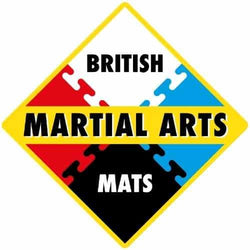EVA (Ethylene Vinyl Acetate), XPE (Cross-linked Polyethylene), EPE (Expanded Polyethylene), and compressed foam are all materials commonly used in martial arts matting, each with its own unique properties and advantages. Here are the key differences and applications for each:
-
EVA (Ethylene Vinyl Acetate):
- EVA foam is lightweight, durable, and shock-absorbent, making it popular for martial arts foam matting.
- Advantages:
- Excellent shock absorption: EVA foam provides cushioning and impact absorption, reducing the risk of injuries during training and practice.
- Lightweight and portable: EVA mats are easy to transport and install, making them suitable for temporary or mobile training setups.
- Water-resistant and easy to clean: EVA foam is resistant to moisture and can be easily wiped clean, making it suitable for use in gyms and training facilities.
- Applications: EVA foam mats are suitable for a wide range of martial arts disciplines, including karate, taekwondo, judo, and bjj mats. They are also commonly used for yoga, gymnastics, and other fitness activities.
-
XPE (Cross-linked Polyethylene):
- XPE foam is a closed-cell foam with excellent shock absorption and durability.
- Advantages:
- Superior shock absorption: XPE foam offers high impact resistance, making it suitable for martial arts training and high-impact exercises.
- Durable and long-lasting: XPE foam is resistant to tears, abrasions, and deformation, ensuring longevity even with heavy use.
- Lightweight and buoyant: XPE mats are lightweight and floatable, making them suitable for activities in water or outdoor environments.
- Applications: XPE foam mats are ideal for martial arts disciplines that involve high-impact movements and throws, such as judo, wrestling, and MMA (Mixed Martial Arts). They are also suitable for outdoor training, beach workouts, and water-based activities like aqua aerobics.
-
EPE (Expanded Polyethylene):
- EPE foam is a lightweight and flexible foam material with good shock absorption properties.
- Advantages:
- Soft and comfortable: EPE foam provides a soft and cushioned surface, offering comfort during training and practice sessions.
- Flexible and easy to manipulate: EPE foam can be easily cut, shaped, and molded to fit specific training areas or custom configurations.
- Cost-effective: EPE foam is often more affordable compared to other foam materials, making it an economical choice for martial arts matting.
- Applications: EPE foam mats are suitable for martial arts disciplines that prioritize comfort and flexibility, such as yoga, Pilates, and stretching exercises. They are also used for low-impact activities like children's play areas and home gym flooring.
-
Compressed Foam:
- Compressed foam mats are made by compressing layers of foam together to increase density and durability.
- Advantages:
- High-density support: Compressed foam mats offer excellent support and stability, making them suitable for heavy-duty use and intense training sessions.
- Enhanced durability: The compression process increases the density and strength of the foam, resulting in a more durable and long-lasting mat.
- Minimal deformation: Compressed foam mats maintain their shape and resilience even with repeated use, providing consistent performance over time.
- Applications: Compressed foam mats are ideal for martial arts disciplines that require maximum support and durability, such as judo mat, wrestling, and MMA. They are also suitable for high-traffic areas in commercial gyms and training facilities.
Overall, the choice of foam material for martial arts matting depends on factors such as the specific requirements of the martial arts discipline, the level of impact and intensity involved in training, and budget considerations. By understanding the properties and advantages of each foam material, practitioners and gym owners can select the most suitable mats for their training needs.


